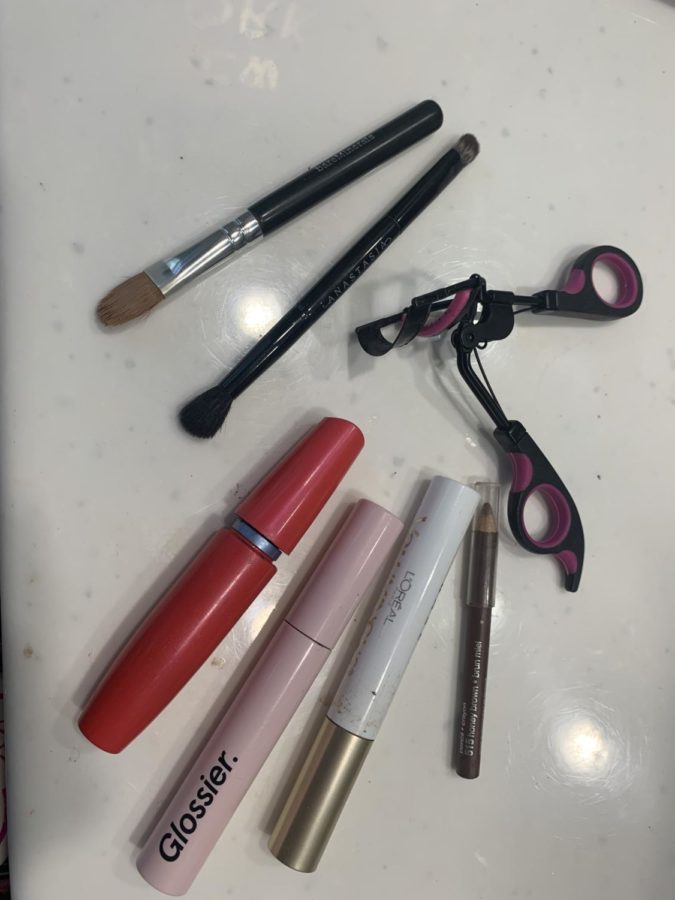The ‘fox-eye’ trend and its impact
August 30, 2020
In the year 2020, trends are constantly changing. It can often be hard to keep up, and when things come and go so quickly, it can be easy to skip over the parts of fashion and beauty that are talked about less.
Makeup, now more than ever, is a form of self-expression. It allows people to showcase their creativity in a way that can become interactive and collaborative. With hundreds of makeup and beauty influencers sweeping the scene on Instagram and TikTok, almost anybody can find individuals with looks that will fit their style and inspire them to try their own versions.
Social media often creates, or at least has a part in shaping, the culture around us. Because of this, when something becomes popular on social media, it will often move to celebrities and those of higher standing because it can help with relevance. Wearing the next big makeup look on the red carpet can become an article published by a well-known news company or a video from an outlet, which will give them more exposure.
One of the largest makeup trends to become a social media craze within the past few months has been the “fox-eye” trend. The idea behind the fox eye is that it is a simple eyeshadow and brow technique that is supposed to allow you to make your eyes appear higher and longer, therefore giving your entire face a more “pulled back” or “sculpted” effect.
However, as this trend began to pull more traction, it also brought behind it a flood of controversy.
As many already know, fashion and beauty trends often take inspiration from certain cultures and races. This begs the question — what is cultural appropriation, and where is the boundary between appreciating someone else’s culture and appropriating it?
“The notion of yellowface has been around for a long time,” said assistant professor Noreen Rodriguez, who specializes in the studies of Asian American history and Asian critical race theory. “People are usually familiar with Blackface, where makeup is used by non-Black performers to give them the appearance of being Black, often in ways that are very stereotypical and offensive. Similarly, yellowface is when makeup and clothes are used to make someone who is not Asian appear Asian based on the stereotypes, like eye shape, and often accompanied by stereotypical accents.”
Rodriguez said while Blackface has become widely understood as racist and stereotypical, yellowface doesn’t seem to register as similarly offensive to everyone.
One of the largest issues that comes with trends is that those who are given the most praise for rocking them are individuals that have no background in the culture or race from which the look is inspired. Gigi Hadid and Kylie Jenner, both white women, have had multitudes of articles written about their “inventive new eye looks,” while Asian individuals have historically been mocked for having similar features.
When one individual wears a certain style and has it be seen as “high fashion” but another individual has the exact same look and has it be seen as ugly or unfavorable, perhaps there is a certain bias at play.
“At the heart of these critiques is the idea that Asians and Asian Americans are often mocked and viewed as less attractive due to their eye shape,” Rodriguez said. “Yet when non-Asians take makeup or other fashion styles that mimic Asian eye shapes, it’s viewed as attractive and exotic.”
The question of cultural appropriation is one that has been longstanding and has often been a struggle for many to understand.
Some individuals see taking a culture’s fashion or beauty traditions and putting them into mainstream culture as a type of appreciation or acceptance. However, to those within the culture, it sometimes can seem that the tradition is being reduced to something less significant than what it really is.
“Cultural appropriation happens when something is viewed as ugly or foreign or weird or unattractive when the group it originates or is associated with uses it,” Rodriguez said. “But when an outsider to the group takes it up, whether it’s makeup or clothing or music, it’s suddenly cool and all the rage.”
Oftentimes, cultural appropriation can happen without the individuals who are taking part in it even understanding the possible harm they are causing. Ignorance is often at fault for many people who may be uneducated on topics and backgrounds and not understand it’s not their place to use these looks or traditions.
However, these trends still bring negative effects to those who already suffer from stereotypes and generalizations.
“It’s related to the idea of impact versus intent,” Rodriguez said. “While the fashion trendsetters may not intend to reinforce stereotypes or do things that are offensive, the idea that people who are of the culture that’s being showcased by an outside member would be normally viewed negatively for wearing that object is the problem. It’s not the individual trendsetter’s fault that society looks down upon certain cultures and their traditions and arts, but often the history and meaning behind whatever the trendsetter is doing is left out.”
Ultimately, trends within society can come from myriad inspirations and wanting to try certain looks out is not an issue. However, it is important to understand where a look or tradition has come from and understand perhaps it is not always yours to take on. When we look at different issues and ideas that pop up through a diversified group of lenses, we will more easily be able to understand how to be more empathetic toward those who are often left out of the picture.







